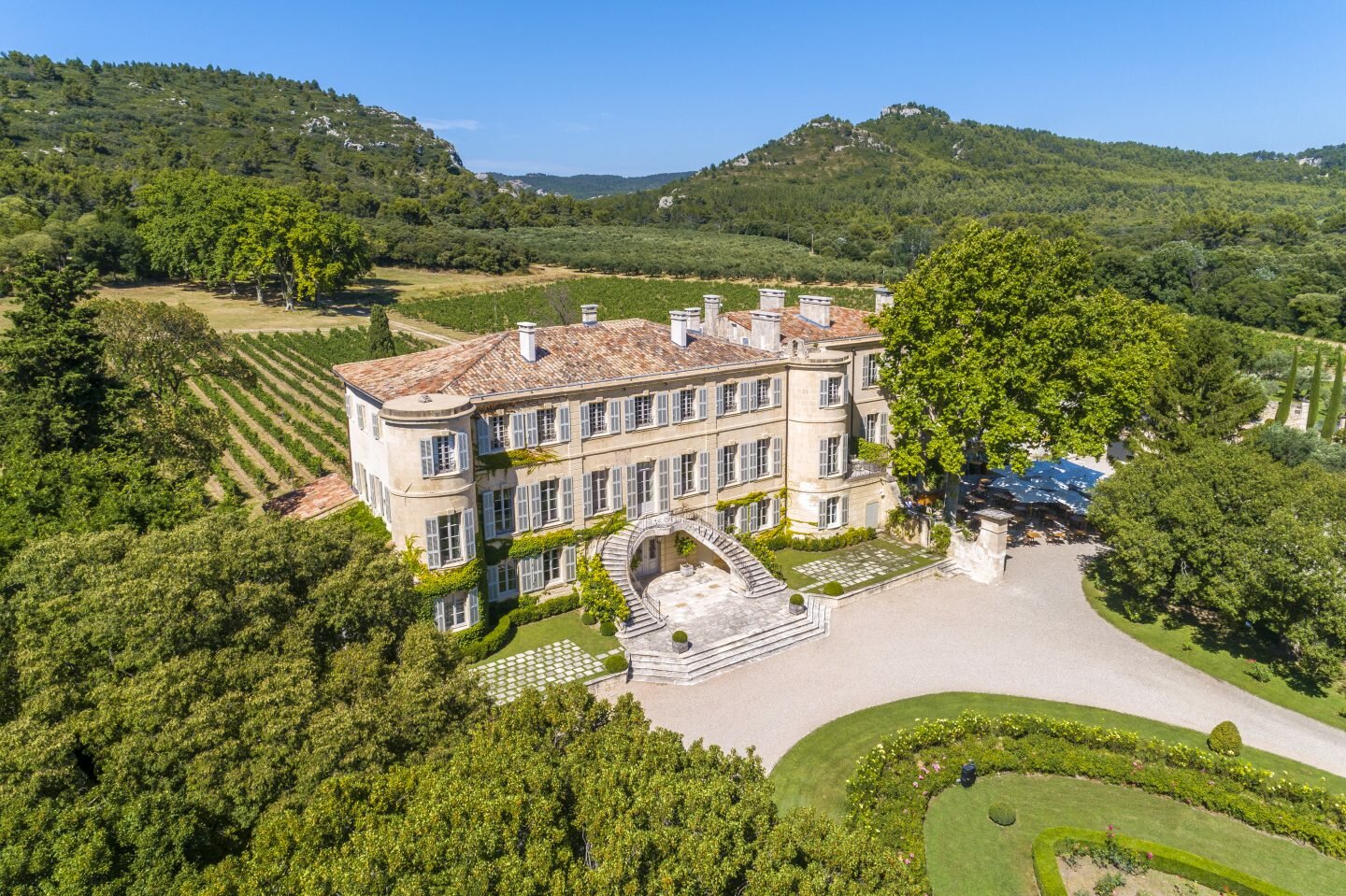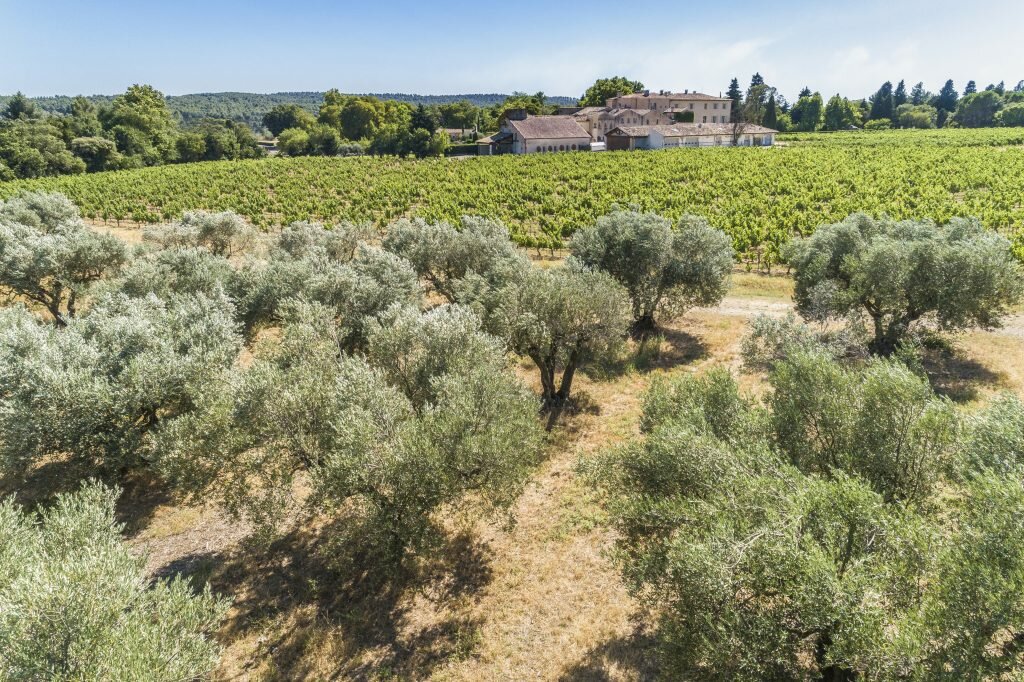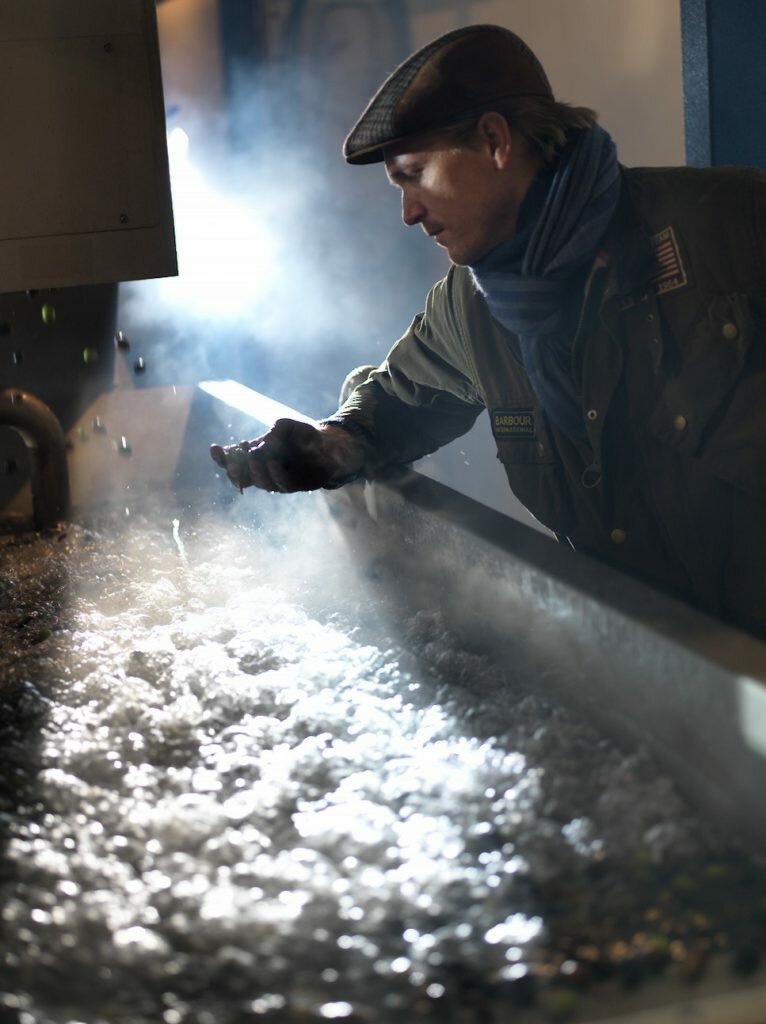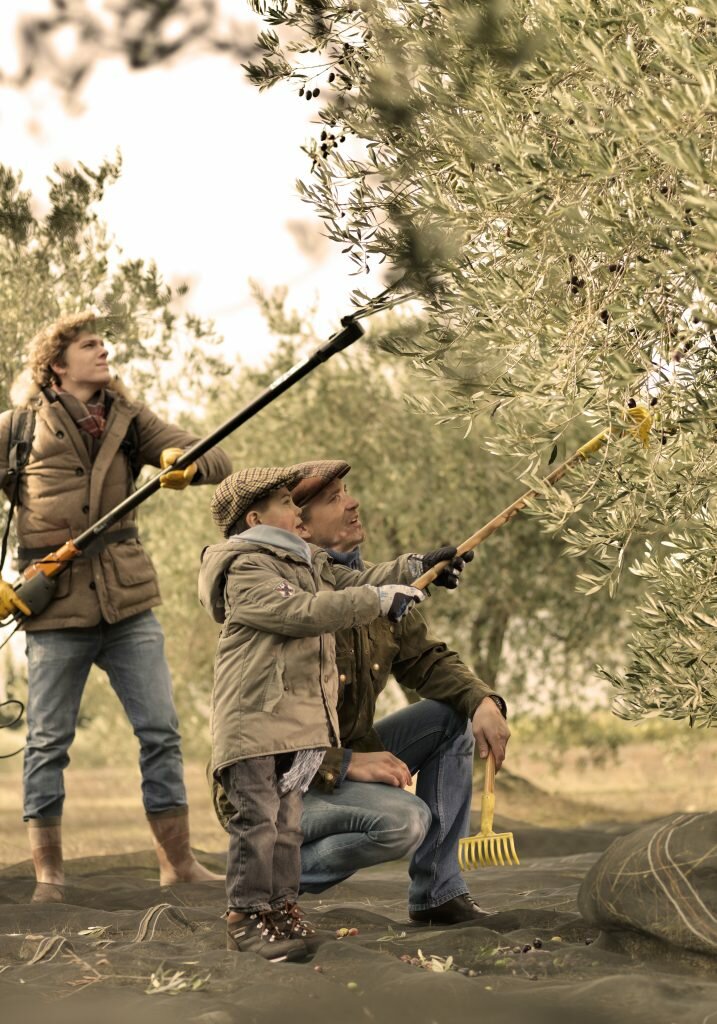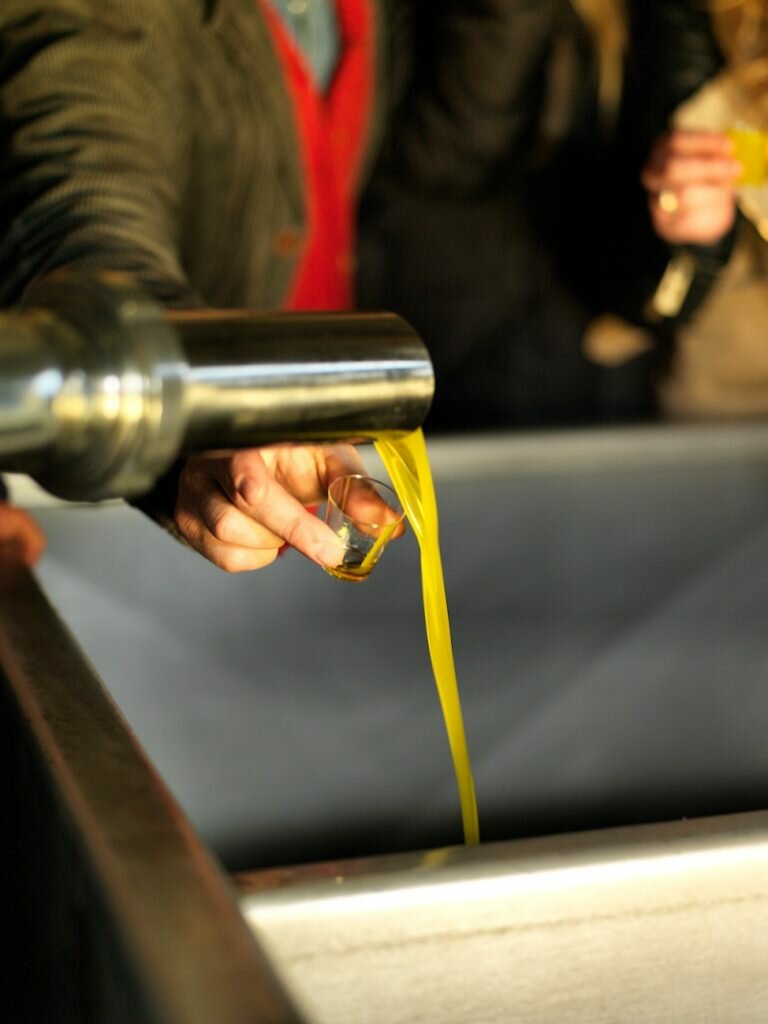Guess which description refers to a wine, and which an olive oil.
“Elegant, soft, fine. Discreet in the mouth, it develops citrus fruit aromas.”
“Fresh, herbaceous, buttered, round. Aromas of cut grass that give an impression of freshness in the mouth.”
They’re both descriptions of olive oil (sorry!) To be precise, they’re tasting notes of the Grossane and Saloneque olive oils from Château d’Estoublon in Provence, which was built in the 17th century and is known for its organic vineyards on the limestone foothills of the Alpilles.
Château d’Estoublon recently made headlines for its change in owners, which follows other high-profile winery acquisitions in Provence. After 20 years with the Reboul-Schneider family, the Prats family (former owners of Cos d’Estournel in Bordeaux) will take a minority stake alongside French entrepreneur Stephane Courbit. Construction will soon begin on a modern, gravity-fed winery, reports Decanter, in tandem with the launch of a limited bottling of a boutique red and white as well as a new premium flagship rose — Roseblood d’Estoublon — that will be available worldwide.
Gourmands, however, revere the Château d’Estoublon marque for its superlative premium extra virgin olive oils, derived from the 120 hectares of olive groves surrounding the Château. The estate is known for its five olive cultivars — Grossane, Saloneque, Beruguette, Picholine and Bouteillan — each of which possesses a distinctive profile that can be alternately delicate, spicy, fruity or light, with aromas of grass, pollen, artichokes, truffle or almond. So good are its oils that Château d’Estoublon took three gold awards at this year’s NYIOOC World Olive Oil competition, the industry’s equivalent of the Oscars.
The wins don’t surprise Chef Sebastien Lepinoy of three-Michelin-starred Les Amis, who since 1994 has made an annual pilgrimage to Provence, and in the process, become deeply acquainted with the estate. Last month, Lepinoy debuted Château d’Estoublon Special Pour Les Amis by Chef Sebastien Lepinoy, a custom assemblage created from the Château’s five signature olive varieties.
“I’ve tried all the monovarietals,” says Lepinoy. “I’m a big fan of the picholine, but it cannot match with everything because the taste is too direct, too powerful, like ‘POM!’.
“On its own it can overpower my caviar and my signature langoustine. So I set out to create an olive oil that has a high percentage of picholine — that was strong in flavour but not too strong, and sweet, possessing all the qualities of the five olive varieties, but in one oil. It’s like making wine,” adds Lepinoy. “It’s about the art of selection, like how a Krug or Dom Perignon champagne is a type of assemblage.”
Special Pour is now available for purchase at Les Amis and soon, Culina. The rich golden liquid has a beautiful smooth and round bouquet, coupled with subtle notes of pepper and earthy aromas. It comes in an elegantly hefty, round-shouldered glass vessel reminiscent of apothecary bottles, and is best consumed within a few months. Till then, Lepinoy recommends keeping it in a cool, dark place (20–25 degrees Celsius is ideal).
“[The Château d’Estoublon Special Pour Les Amis olive oil] is not too peppery, not too Spanish. It’s a little sweet, and has a long finish on the palate. The aroma takes you straight to Provence.”
Chef Sebastien Lepinoy
“It’s not too peppery, not too Spanish. It’s a little sweet, and has a long finish on the palate. The aroma takes you straight to Provence,” says Lepinoy, who first conceptualised the idea for Special Pour in July. Thanks to the restaurant’s five-time-a-week produce delivery from France, the magic of Zoom and what Lepinoy describes as Château d’Estoublon’s extraordinary spirit of collaboration, the first batch of bottles were ready by November.
“It’s the final product of five months of experimentation and three rounds of tasting and recalibration in order to create the perfect balance,” says Enzo Berbeche, Château d’Estoublon’s managing director. “Many batches of samples were tasted and reviewed to reach the expected result.”
Château d’Estoublon’s wins (among eight taken by French producers) at the NYIOOC World Olive Oil competition is a considerable boost for France, which produces a sliver of global output, unlike the triumvirate of Spain, Italy and Greece, Europe’s three largest olive oil producers.
Similar to its wine sector, French olive oil producers use a system of protected designations of origin. Today there are eight, spanning the Vallee des Baux to the AOC of Provence. They have seen their fair share of calamity, the most devastating being a massive frost that killed most of the country’s trees in 1956. More recently, French producers have been impacted by poor weather conditions, which greatly undermined the 2019/20 harvest, with Covid dealing the latest setback.
“We are, like everyone, waiting for sunlight,” says Berbeche, who adds that the estate’s restaurant and guesthouse remain shuttered. Despite this, “we will keep making olive oil of extremely high quality.”
Not all producers can or choose to do so, but Château d’Estoublon presses all its olives in its own on-site mill, ensuring total control from branch to bottle. Each batch of olives is cold-pressed as swiftly as possible after harvest to ensure freshness, then filtered, before being stored in stainless steel tanks in a temperature-controlled chamber.
“Château d’Estoublon follows a strict production process that improves the quality of the olive oil at every step. We take great care of our olive trees, making sure they have enough water and nutrients to grow. Our soils are organic and we limit our impact on them as much as we possibly can,” says Berbeche, who adds that the estate’s global business outlook has seen its oils proving popular in Asia, particularly Korea and Japan.
Meanwhile, foodies here can enjoy a little taste of Provence at home, by drizzling Special Pour over some tomatoes, burrata or — Lepinoy’s top pick — in a quintessentially French Niçoise salad. For an unexpected twist, try using it with Chinese-style steamed fish.
“Instead of pouring hot oil at the end to make the fish crispy, add Special Pour and a little soy sauce. It’s almost like a vinaigrette,” says Lepinoy. “It will be perfect.”
